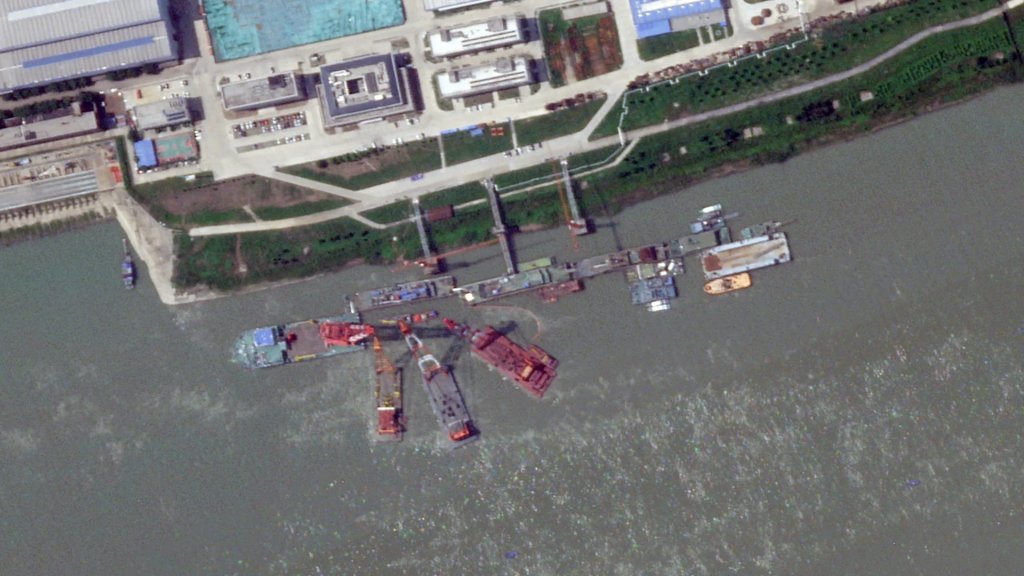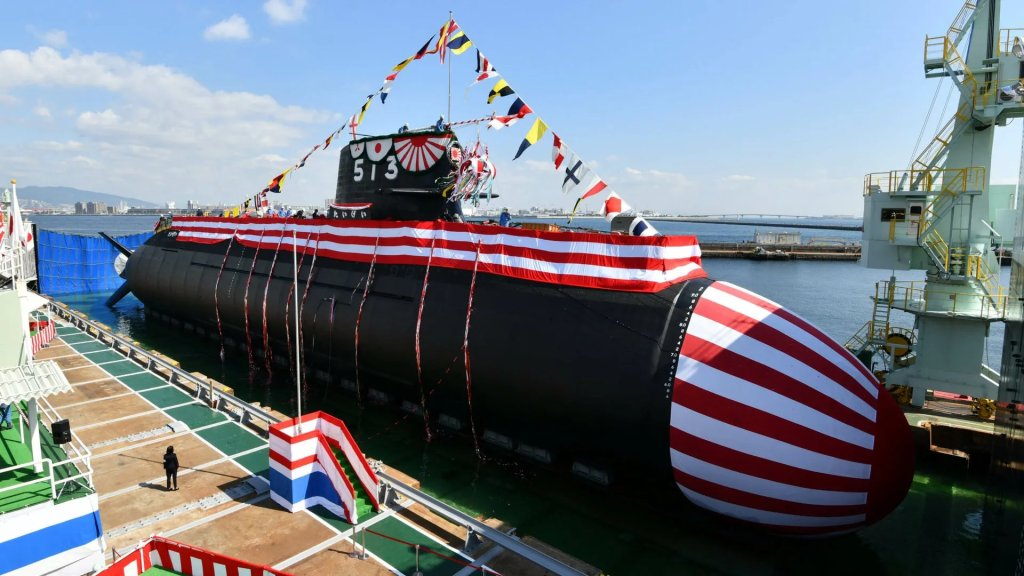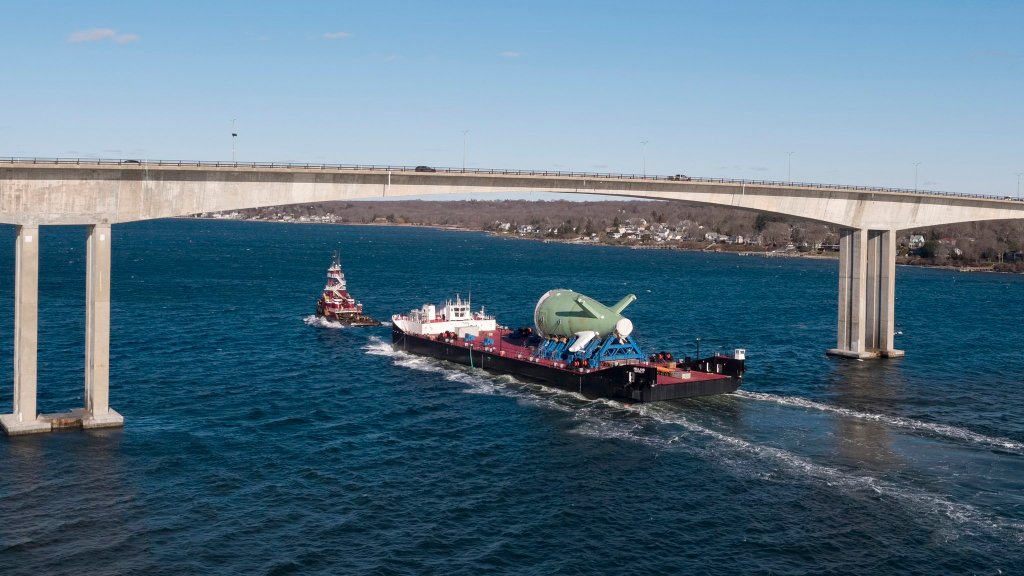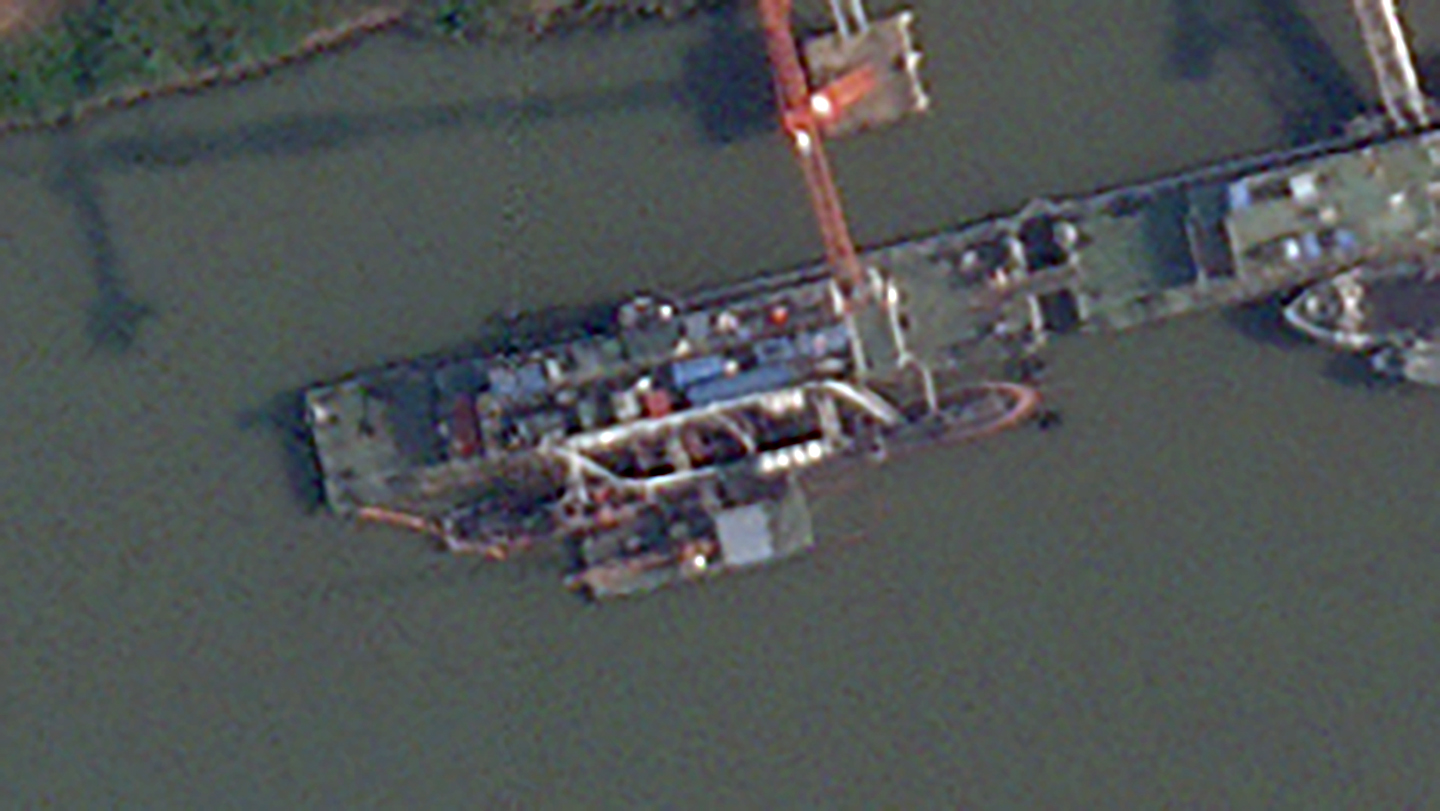A new Chinese crewed submarine has appeared featuring X-form rudders for the first time. Whether the recently spotted submarine is a further iteration of an existing class, or if it’s an entirely new design, it reflects the rapid pace of development in the country’s submarine program, which features increasingly advanced and innovative nuclear- and conventionally powered types.
Tom Shugart, an adjunct senior fellow at the Center for a New American Security (CNAS) think tank and retired U.S. Navy submarine warfare officer, was first to notice the new boat, at Wuchang Shipyard, in Wuhan. The yard is predominantly associated with the construction of variants of the Type 039A conventionally powered Chinese subs.
A satellite image of the shipyard acquired recently by Shugart, but dating from April 26, 2024, shows the new submarine design, as well as an apparent Hangor II class submarine, which is being built for Pakistan, and which is known to have been launched in that same month.
In his analysis, Shugart writes: “Comparing the Hangor with images of earlier [Type] 039A class boats — and the new boat — the difference is plain to see. The new boat appears substantially longer, and looking at multiple images of it, [it] also appears to have an X-stern, a feature not seen before on any Chinese submarine.”
Using imagery analysis, Shugart estimates that the new submarine design is around 272-279 feet long overall, compared to around 253 feet overall for the Type 039A Yuan class. The Type 039s have a displacement of approximately 3,600 tons.
Shugart had previously seen unusual activity at Wuchang Shipyard, which he had assessed was related to work on a “presumably new-construction” Type 039 variant. In fact, this mystery boat — which you can read more about here — was apparently the new X-stern design, seen in the imagery from late April in the same berth. However, its precise relationship to the Type 039 remains unclear.
Subsequent satellite imagery, dated June 15, shows that the new submarine had left its berth, leaving the Hangor II there. The berth where the new boat previously was is still surrounded by cranes.

By early July, the crane activity had come to an end, but what appears to be the Hangor II is still there. This suggests the new submarine has been completed and may way well have already commenced sea trials or has otherwise been moved elsewhere for trial work.
Independent naval analyst H. I. Sutton has also offered some thoughts about the new submarine design on his blog.
Looking at the extended hull length, Sutton suggests that one reason for this may be the addition of vertical launch system (VLS) cells.
This feature is still extremely rare on conventionally powered submarines, but there are some precedents. There is growing speculation that Israel’s new Dakar class of submarines will have provision for a VLS. There is even a possibility that the last of Israel’s previous Dolphin II class subs, INS Drakon, might also be equipped with VLS cells. In South Korea, meanwhile, the Dosan Ahn Changho class diesel-electric attack submarine has a capacity for six submarine-launched ballistic missile (SLBM) tubes, although these can also be alternatively loaded with cruise missiles.

At this stage, we can’t be certain that the lengthened hull of the new Chinese design accommodates VLS cells, but it’s certainly an intriguing possibility. VLS cells could be used to launch additional cruise missiles, for extra overall capacity, while also freeing up the torpedo tubes for their primary weapons. New types of missiles might also be better accommodated by VLS cells, perhaps even including hypersonic weapons that would likely be too large for the torpedo tubes, or potentially smaller types of ballistic missiles, as in the South Korean Dosan Ahn Changho class. China is already a pioneer in ship-launched ballistic missiles and it’s conceivable that such weapons could also find their way onto submarines.
At the same time, the additional hull length — as well as the new rudder configuration — could also be connected to some new kind of propulsion arrangement. This could potentially be based on the same kind of lithium batteries used in Japan’s latest Soryu class submarines, which you can read about here. These batteries provide increased endurance at high speeds when submerged, quicker charging and longer battery life, and reduced maintenance requirements.

Other possibilities behind the lengthened hull could be additional internal volume to accommodate surveillance equipment or different kinds of special mission gear, perhaps related to covert operations including infiltration/exfiltration.
What’s beyond doubt, however, is the X-form rudder on the new Chinese design.
As we have discussed in the past, an X-form rudder configuration provides improved maneuverability, efficiency, and safety, and also helps reduce the acoustic signature across significant parts of the submarine’s operating envelope compared to the more traditional cruciform system. The x-form configuration also makes particularly good sense for operations in the South China Sea and other littoral areas, as do conventionally powered submarines in general.

The first Columbia class submarine stern rides underneath the Jamestown Verrazzano Bridge heading to the General Dynamics Electric Boat plant in Quonset Point, Rhode Island. (General Dynamics Electric Boat)
While an X-form rudder configuration has become increasingly popular and is now found on other submarine designs around the globe, this is the first time that it’s known to have been included on a Chinese crewed submarine. Some Chinese extra-large uncrewed underwater vehicles (XLUUV) have featured these kinds of rudders, however.
As mentioned, the new submarine could be the first of an entirely new class, or it could be another member of the Type 039 or Yuan class.
This major class already includes several subclasses, with the most recent to have been positively confirmed being the Type 039C. The War Zone has previously looked at the Type 039C in detail and it’s noticeable for featuring an unusual new sail design, raked along its leading edge and which flares out toward the top. There have also been suggestions that the revised sail design is related to a sonar or communications system, with signs of a housing compartment on the upper part of the rudder that could well house a towed array sonar.

www.twz.com
The overall appearance of the Type 039C is very similar to the sail on Sweden’s next-generation A26 Blekinge class submarine and is very likely intended to improve the boat’s stealthy characteristics.
Already mass-produced are the preceding Type 039A/B class, an impressive class of modern submarines, 21 of which are in Chinese service, according to U.S. Navy figures, while modified versions are also being built for export to Pakistan and Thailand.
Among the key advantages of the Type 039s — at least the A/B subclasses — over earlier Chinese designs is their presumed use of air-independent propulsion (AIP) technology, something that The War Zone has examined in detail in the past. The Chinese submarines are thought to use an engine similar to the Stirling-type design, in which an auxiliary engine burns liquid oxygen and diesel to drive electrical generators that can be used for either propulsion or charging the batteries. Compared to a traditional diesel-electric boat, an AIP submarine can remain submerged for much longer — multiple days at a time — without needing to surface or use a snorkel.

Otherwise, the Type 039A/B boats are widely understood to be some of the quietest submarines in active Chinese service, while the Type 039C may be quieter still.
While the exact purpose and capabilities of the new submarine design are unclear, its appearance does point to the fast pace of activity in China’s underwater warfare realm.
In the past, we have examined China’s prodigious naval shipbuilding program and while there has been considerable focus on its aircraft carriers and amphibious assault ships, it’s clear that work on advanced new submarines is a priority, too.
It’s especially notable that these submarine developments are following a two-pronged path, with both nuclear- and conventionally-powered designs, in stark contrast to the all-nuclear U.S. Navy.
China clearly has recognized that continuing to build conventionally powered submarines offers critical advantages, including lower costs, contributing to a fast-growing submarine force. At the same time, these kinds of submarines — especially the more advanced ones now in production — can also be quieter than their nuclear-powered counterparts during certain modes of operation, and are better suited to operations in littoral and shallower waters. These points are of key importance for future contingencies in the South China Sea, for example. In other ways, of course, conventionally powered boats are far more limited than nuclear-powered subs.
Time will tell whether the newly appeared design is a one-off or if will become part of China’s prodigious submarine-building program, which continues to introduce advanced hulls, like the Type 039s, to replace aging diesel-electric designs.
At the very least, the appearance of the new submarine should provide a reminder of the growing threat that China’s underwater fleet poses to the U.S. Navy and other naval powers.
Contact the author: thomas@thewarzone.com
